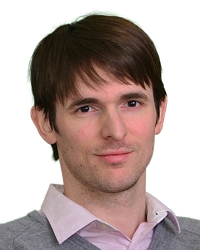TR2025-033
Leveraging Audio-Only Data for Text-Queried Target Sound Extraction
-
- , "Leveraging Audio-Only Data for Text-Queried Target Sound Extraction", IEEE International Conference on Acoustics, Speech, and Signal Processing (ICASSP), DOI: 10.1109/ICASSP49660.2025.10888769, April 2025.BibTeX TR2025-033 PDF
- @inproceedings{Saijo2025mar2,
- author = {Saijo, Kohei and Ebbers, Janek and Germain, François G and Khurana, Sameer and Wichern, Gordon and {Le Roux}, Jonathan},
- title = {{Leveraging Audio-Only Data for Text-Queried Target Sound Extraction}},
- booktitle = {IEEE International Conference on Acoustics, Speech, and Signal Processing (ICASSP)},
- year = 2025,
- month = mar,
- doi = {10.1109/ICASSP49660.2025.10888769},
- url = {https://www.merl.com/publications/TR2025-033}
- }
- , "Leveraging Audio-Only Data for Text-Queried Target Sound Extraction", IEEE International Conference on Acoustics, Speech, and Signal Processing (ICASSP), DOI: 10.1109/ICASSP49660.2025.10888769, April 2025.
-
MERL Contacts:
-
Research Areas:
Abstract:
The goal of text-queried target sound extraction (TSE) is to extract from a mixture a sound source specified with a natural- language caption. While it is preferable to have access to large-scale text-audio pairs to address a variety of text queries, the limited number of available high-quality text-audio pairs hinders the data scaling. To this end, this work explores how to leverage audio-only data without any captions for the text-queried TSE task to potentially scale up the data amount. A straightforward way to do so is to use a joint audio-text embedding model, such as the contrastive language-audio pre-training (CLAP) model, as a query encoder and train a TSE model using audio embeddings obtained from the ground-truth audio. The TSE model can then accept text queries at inference time by switching to the text encoder. While this approach should work if the audio and text embedding spaces in CLAP were well aligned, in practice, the embeddings have domain-specific information that causes the TSE model to overfit to audio queries. We investigate several methods to avoid overfitting and show that simple embedding-manipulation methods such as dropout can effectively alleviate this issue. Extensive experiments demonstrate that using audio-only data with embedding dropout is as effective as using text captions during training, and audio-only data can be effectively leveraged to improve text-queried TSE models.
Related News & Events
-
EVENT MERL Contributes to ICASSP 2025 Date: Sunday, April 6, 2025 - Friday, April 11, 2025
Location: Hyderabad, India
MERL Contacts: Wael H. Ali; Petros T. Boufounos; Radu Corcodel; Chiori Hori; Siddarth Jain; Toshiaki Koike-Akino; Jonathan Le Roux; Yanting Ma; Hassan Mansour; Yoshiki Masuyama; Joshua Rapp; Diego Romeres; Anthony Vetro; Pu (Perry) Wang; Gordon Wichern
Research Areas: Artificial Intelligence, Communications, Computational Sensing, Electronic and Photonic Devices, Machine Learning, Robotics, Signal Processing, Speech & AudioBrief- MERL has made numerous contributions to both the organization and technical program of ICASSP 2025, which is being held in Hyderabad, India from April 6-11, 2025.
Sponsorship
MERL is proud to be a Silver Patron of the conference and will participate in the student job fair on Thursday, April 10. Please join this session to learn more about employment opportunities at MERL, including openings for research scientists, post-docs, and interns.
MERL is pleased to be the sponsor of two IEEE Awards that will be presented at the conference. We congratulate Prof. Björn Erik Ottersten, the recipient of the 2025 IEEE Fourier Award for Signal Processing, and Prof. Shrikanth Narayanan, the recipient of the 2025 IEEE James L. Flanagan Speech and Audio Processing Award. Both awards will be presented in-person at ICASSP by Anthony Vetro, MERL President & CEO.
Technical Program
MERL is presenting 15 papers in the main conference on a wide range of topics including source separation, sound event detection, sound anomaly detection, speaker diarization, music generation, robot action generation from video, indoor airflow imaging, WiFi sensing, Doppler single-photon Lidar, optical coherence tomography, and radar imaging. Another paper on spatial audio will be presented at the Generative Data Augmentation for Real-World Signal Processing Applications (GenDA) Satellite Workshop.
MERL Researchers Petros Boufounos and Hassan Mansour will present a Tutorial on “Computational Methods in Radar Imaging” in the afternoon of Monday, April 7.
Petros Boufounos will also be giving an industry talk on Thursday April 10 at 12pm, on “A Physics-Informed Approach to Sensing".
About ICASSP
ICASSP is the flagship conference of the IEEE Signal Processing Society, and the world's largest and most comprehensive technical conference focused on the research advances and latest technological development in signal and information processing. The event has been attracting more than 4000 participants each year.
- MERL has made numerous contributions to both the organization and technical program of ICASSP 2025, which is being held in Hyderabad, India from April 6-11, 2025.
Related Publication
- @article{Saijo2024sep3,
- author = {Saijo, Kohei and Ebbers, Janek and Germain, François G and Khurana, Sameer and Wichern, Gordon and {Le Roux}, Jonathan},
- title = {{Leveraging Audio-Only Data for Text-Queried Target Sound Extraction}},
- journal = {arXiv},
- year = 2024,
- month = sep,
- url = {https://arxiv.org/abs/2409.13152v1}
- }

